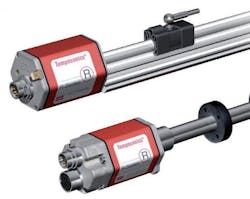As much attention as Big Data, cloud computing, and the Industrial Internet of Things (IIoT) has received over the past few years, the enabler of all these technological trends for industry has been industrial Ethernet. After all, without the Ethernet networking platform to transfer plant data into and out of the IT space, we wouldn't be talking about any of these trends.
But the industrial Ethernet story doesn't begin and end at the network layer. Its effects have spread to all plant floor devices — from PLCs and drives with Ethernet ports down to the sensor layer. And it’s at the sensor layer where things get really interesting for industrial Ethernet, as many in industry have long maintained that the spread of Ethernet would not extend down to the sensor level. For a variety of reasons, the instrumentation and sensing level has long been considered to be the one area that would continue to rely on 4-20mA and fieldbus connectivity.
Despite the consensus around this sentiment, the advent of deterministic Ethernet protocols and zero failover redundancy protocols have led some industry suppliers to forge ahead with the development of industrial Ethernet capable sensors.
MTS Sensors is an example of one such company that has made this move with its R-Series of magnetostrictive sensors based on Temposonics technology. Offered in rod style, profile style and flex style sensor housings, with a range of stroke lengths available, these devices are capable of delivering repeatable data within a ±0.001 percent margin, said Dave Fabrizio of MTS Sensors.
The company’s model RH and RP high accuracy linear position sensors both provide EtherNet/IP functionality and have already been specified into several customer applications, Fabrizio said. “The sensors’ built-in device-level-ring (DLR) capability enables direct connection to networks that have ring topologies without the use of external switching components,” he added.
Fabrizio also pointed out that R-Series’s model RD4 sensor features a detached electronics arrangement, meaning that more delicate components can be kept away from potential sources of harm that might be present close to the sensor head. “In addition to traditional voltage and current outputs, this sensor also has an array of other output options, including SSI, CANbus, DeviceNet, Profibus, EtherCAT and EtherNet/IP,” he said.
Recent enhancements to the R-Series enable it to conform to the latest version of the EtherNet/IP protocol. MTS has even recertified the series “in accordance with the ODVA’s EtherNet/IP CT12 composite conformance test revision,” said Fabrizio. This means the upgraded devices are “better able to meet the needs of modern industrial networking systems, interfacing with a broader spectrum of hardware that is EtherNet/IP compliant.”
MTS Sensors’ Temposonics position sensing technology allows the company to differentiate its sensor devices by having its sensors use magnetostriction to accurately determine absolute position. Fabrizio added that “sensors based on this technology are optimized for use in the most uncompromising of industrial environments.”
Leaders relevant to this article:


